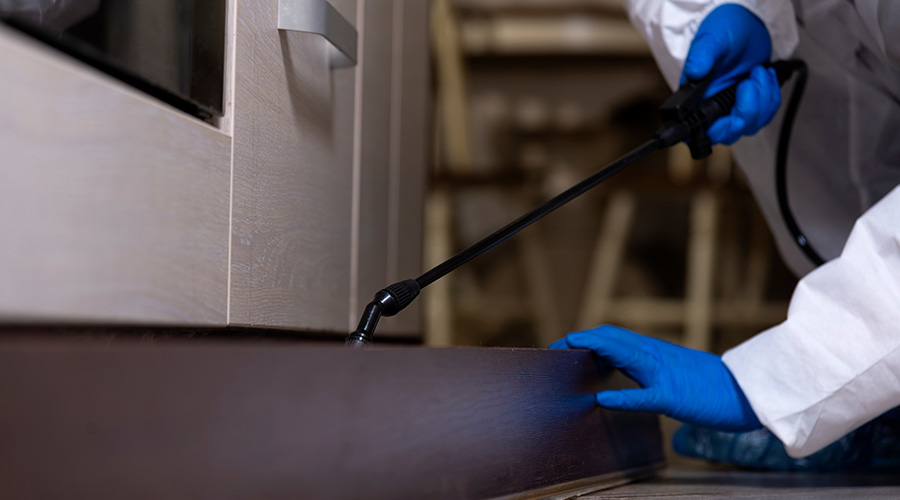New Thinking for a New Era
As priorities shift within organizations, managers can deliver benefits by rethinking insulation specification
Insulation has been part of human existence since our ancestors built mud huts to keep out the heat and cold. Contrast the mud hut to the modern Leadership in Energy and Environmental Design (LEED) green building. They are both products of their environments and their times.
The mud hut was easy to erect using basic materials, such as sticks, dirt and water. A LEED-certified building is built with advanced technology, such as computers, mechanical systems, insulation throughout the building and myriad other products.
In both cases, however, builders want to accomplish two things. First, they must provide a safe, comfortable environment in which to function. Second, they must build a facility with the optimum materials that will benefit the owner and occupants at a price that can be economically justified.
Insulation Today
Today, simply using rules of thumb in constructing and updating a facility can be as logical as using mud and sticks to build a high-rise. An emphasis within commercial and institutional organizations on return on investment, safety, comfort and indoor environmental quality requires that managers use the latest tools and resources in analyzing insulating materials.
Fortunately, the tools managers need to make a logical, economically justifiable decision on insulation are becoming easier to use every day. Computers and programs such as 3E Plus from the North American Insulation Manufacturers Association (NAIMA) can simplify specifying the insulation of piping and other applications.
For more on NAIMA’s resources and activities, see the sidebar at the bottom of the page.
Before deciding on the optimal thickness, the experienced manager will want to know the function that insulation must protect. The type and thickness necessary to insulate residential hot-water heat is vastly different than the type necessary to protect workers from high-temperature hot water. Experienced insulation professionals realize that if such issues are addressed completely, the chance of problems increases tremendously.
The First Steps
What are the steps in deciding what type and thickness of insulation to be used? What is the application? Are we insulating a facility in Boca Raton or in Anchorage? Is moisture control an issue?
In order to understand how much insulation to use, managers must have an in-depth knowledge of who, what, when, where, why and how the insulation will be used. While these questions might sound basic, it is amazing how often not knowing just one of these answers has created a great deal of business disruption and cost.
HOW MUCH THERMAL INSULATION IS NECESSARY? It is essential to understand the product, its temperature, pressure, chemical make-up, and the ambient temperature. Are the temperatures and pressures going to create a life safety issue? If the surface temperature of a pipe is 500 degrees, how much insulation is required for a technician to work on it safely and productively?
Is the design for an HVAC ductwork with ducted supply and return or with a return plenum? In one installation, insulating both ducts will give the best result. In the other, insulating the supply duct might be the optimum way to go.
It also might be necessary to insulate ductwork to prevent noise pollution, which might be “tin can” noise when a fan starts up or conversations from the office next door.
WHAT EFFECT WILL WATER VAPOR HAVE ON THE INSULATION? Differences between the ambient temperature and the system temperature can result in condensation on bare piping. When properly installed, insulation and covering protects the pipe from condensation.
When the vapor seal is broken, condensation can cause deterioration on the outside of the pipe. This deterioration can cause the pipe to rupture prematurely, resulting in serious safety issues. Using process safety management and risk management programs can prevent such problems.
Two activities cause the most damage to vapor seals.
First, when piping modifications are made, installers must cut back the insulation to accommodate the new piping connection. Depending on operating parameters, it might be necessary to shut down the operation to repair the insulation and vapor barrier. Top management sometimes feels this is an unnecessary expense, but any dollars lost due to a lack of insulation pale in comparison to the cost of a business interruption. A pipe or storage vessel might burst due to rusting as a result of the loss of the vapor seal. The resulting cost in terms of lost productivity and possible life- safety issues makes that decision seems terribly short sighted.
Second, routine operations and maintenance can cause a loss of the vapor barrier. For example, problems commonly occur when technicians use a pipe and the insulation around it as a step when trying to adjust a control valve. The resulting pipe deterioration might not be apparent immediately, but deterioration is continuing at a rate that varies depending operating parameters.
Corrosion under insulation can consume as much as 60 percent of a company’s piping maintenance costs. Most corrosion of steel pipe occurs in the range of 25-300 degrees. Managers should be aware that getting some insulation types wet will result in a leaching of salts from the insulating material, which can damage steel pipe, as well as stainless pipe. Valves and fittings also can suffer deterioration — in some instances, before the material loss is evident in the pipe itself.
IS FIRE SAFETY AN ISSUE? Insulation fire- safety ratings are listed on material safety data sheets (MSDS) that should accompany the delivery of any insulation-bearing products. If an MSDS is not delivered to the end user, it should be made available upon request.
IS RESISTANCE TO CORROSION A REQUIREMENT? Corrosion can occur as stated above, when the vapor barrier is broken. Stainless steel piping is not completely impervious to corrosion, and external stress corrosion cracking is fairly common in some types of stainless steel pipes. Maintenance technicians must be trained to realize the notion that stainless steel can’t corrode is antiquated and erroneous.
Maintenance Considerations
Maintenance technicians often find themselves in the unenviable position of having to live with insulation that was purchased on the basis of lowest first cost. Talk to any maintenance technician, and he or she will tell horror stories about how designers and planners sought their input early in a project but then ignored it. Very likely, they will tell stories of pointing out the need for a more robust product, only to have the installation end up with the lowest-cost product.
Without the input from the people who have to work with an installation on a daily basis, problems arise, and the resulting shortcuts can make maintaining the integrity of the insulation almost impossible.
The first step for any manager or product specifier is to listen to the customer. The problem is that the ultimate customer — operations personnel who have to make the insulated system operate properly — are the last ones planners consult. In these cases, the voice of the cost accountants drown out the voice of the customer. Then management wonders why they have to redo the insulation after six years or sooner.
Recommendations
First and foremost, managers and other product specifiers need to listen to the customer. People who have to live with a finished project are the ones who need to know what is being installed. If end users are not consulted, blaming the contractors or the designers when insulation fails to perform as expected can lead to finger-pointing. In the worst case, it ends up in court, satisfying only the lawyers.
Second, when deciding which contractor and type of insulation to use, managers need to have each contractor submit a proposal without the price, then evaluate the relative merits of each bid.
Using the organization’s best practices ranking system, managers can rank each proposal in order of preference and combine the prices with the each bid. The final step is to pick the bid that is the proper combination of price and quality. If price is the component everyone looks at first, the chances of getting a top-quality finished project tend to diminish dramatically.
Many accountants believe that the tighter the spec, the better the job. But what managers and organizations really needed is a better evaluation of the bid process. Why not pick a product that exceeds the spec? Do you pick the company that will do the job better than the others, or is it always price?
Rethinking the traditional process for specifying and selecting insulation to focus on organizations’ increasing need for energy efficiency and long performance life is likely to produce an installation that benefits both the organization and the technicians who must work with the finished product.
Rich Goulet is president of Goulet & Associates Inc. — www.gouletassociateshvac.com — and has more than 25 years of experience in the HVAC/R industry designing duct systems, ammonia piping systems and other commercial and industrial systems.
Spotlight: NAIMA
The North American Insulation Manufacturers Association (NAIMA) is a trade association of North American manufacturers of fiber glass, rock-wool, and slag-wool insulation products. NAIMA promotes energy efficiency and environmental preservation through the use of fiber glass, rock wool and slag wool insulation products, while encouraging safe production and use of these products.
As part of its mission, NAIMA promotes the broad benefits of energy efficiency and the implementation of sustainable design principles through increased insulation levels in buildings, including the quantification and promotion of the environmental, social, health and economic benefits resulting from energy efficiency in buildings and industrial facilities.
The association has provided and maintains research on the health, safety and benefits of glass, rock, and slag fibers, and it disseminates the results to government agencies, the industry at large, customers, contractors, employees, and the general public.
NAIMA also publishes literature on product performance, installation guidelines, energy-saving tips, insulation needs, building-code guidance, and general health and safety aspects of insulation products.
Protecting worker safety and educating end users on the proper ways to install insulation is a top priority. NAIMA manages a detailed training effort across markets. The association sponsors and develops training initiatives at technical schools, community colleges, and engineering schools, as well as for regional code officials and industry partners.
For more information, visit www.naima.org, www.simplyinsulate.org, and www.pipeinsulation.org.
|
Related Topics:











